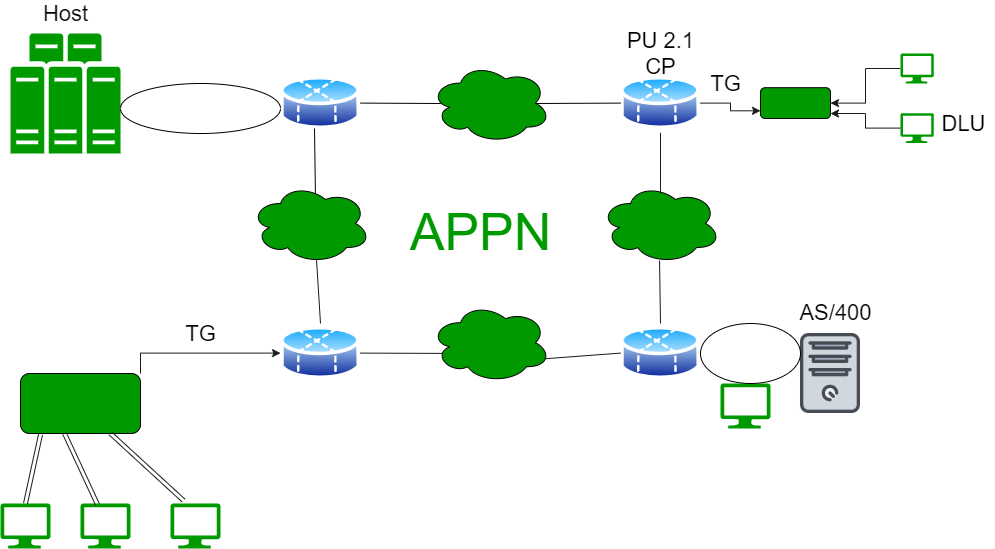Types of APPN Nodes
Last Updated :
12 Jul, 2022
Advanced Peer-to-Peer Networking (APPN) is the moment generation of Systems Network Architecture (SNA). It was created by IBM to meet these prerequisites:
- To supply a compelling directing convention to permit SNA activity to stream natively and concurrently with other protocols.
- To permit sessions to be built up between the conclusion clients without the association of the mainframe.
- To diminish over the top necessities to anticipate assets and paths.
- To keep up a course of service (CoS) and to supply prioritization inside SNA activity.
APPN was characterized around 1986 and was implied to complement IBM’s Frameworks to Organize Design. It was outlined as a disentanglement, but it turned out to be essentially complex, in specific in movement circumstances. APPN was initially implied to be a “DECNET executioner”, but DEC really kicked the bucket sometime recently after APPN was completed. APPN has been to a great extent superseded by TCP/IP (Web). 
APPN Terminology
- Transmission Group (TG): Alludes to the same thing in both APPN terminology and legacy SNA: the set of lines that interface two adjoining hubs. The distinction is that the current APPN engineering limits a TG to a single interface, in spite of the fact that multi-link TGs are anticipated to be actualized within the future. The topology database contains NNs and TGs, the joins that interface NNs.
- Dependent Logical Units: Legacy logical units (LUs) in sorts 0, 1, 2, 3, and so forward. They can not start sessions without the mediation of VTAM and they can not take part effectively in a peer-to-peer session start.
- Physical Unit 2.1 (PU 2.1): Physical Unit type for peer-to-peer processing.
- Control point (CP): A primary component of an APPN hub. The CP is mindful of the administration of the APPN node. It enacts the joins to adjoining nodes, actuates the CP-CP sessions with other nodes, finds network assets, and collects and share topology data with other nodes.
Types of APPN Nodes
- Network Node (NN): A router in an APPN organize. Other assets go to the NN when the actuation of sessions and location of assets is required.
- End Node (EN): It can be thought of as an application hosts, which access the network through its NN server. An EN contains a subset of APPN functionalities; it does not have capacities like arrange topology, maintenance, and rerouting.
- Low Entry Node (LEN): The initial peer node that IBM characterized as AS/400s and S/36s. It permitted communication between two nodes with the mediation of VTAM. Shockingly, it did not give for quick steering, so hand-off applications or coordinate associations were required. APPN nodes are the extensions added to LEN nodes to supply this included usefulness. LEN nodes can get to an APPN organize through an NN server, but assets must be predefined.
- Composite Network Node (CNN): Concocted to portray the APPN usefulness that’s actualized in VTAM and in Organize Control Program (NCP). VTAM can be a standalone NN, but NCP can not. Hence, when they work together, they can speak to a single NN.
- Branch Network Node (BrNN):Shows up as an EN to an upstream NN whereas it gives NN administrations for downstream ENs and Focal point. This bolster for BrNN is additionally commonly alluded to as Department Extender (BX). The BX work disposes of APPN topology and APPN broadcast look streams between APPN NNs and the SNA application has within the arrange, which makes the APPN arrange much more adaptable. Cisco’s current APPN usage, SNASwitch, replaces the bequest APPN execution from 12.1 and employments BX.
Features of APPN:
- Disseminated network control.
- Dynamic trade of network topology data to cultivate.
- Ease of association, reconfiguration, and course selection. dynamic definition of organize resources.
- Automated asset enrollment and registry lookup.
Like Article
Suggest improvement
Share your thoughts in the comments
Please Login to comment...